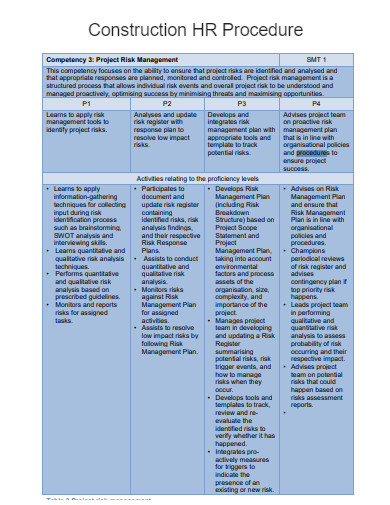In the dynamic realm of construction, the HR procedure stands as a pillar of success. Effective Construction HR procedures ensure that the industry’s talent is onboarded, trained, and managed to the highest standards. Delving into this crucial process, we’ll uncover the strategies that lead to cohesive teams, efficient project delivery, and a robust work culture. As construction projects rise, so does the need for streamlined human resources. Let’s embark on this foundational journey.
12+ Construction HR Procedure Samples
1. Construction HR Procedure Template Bundle
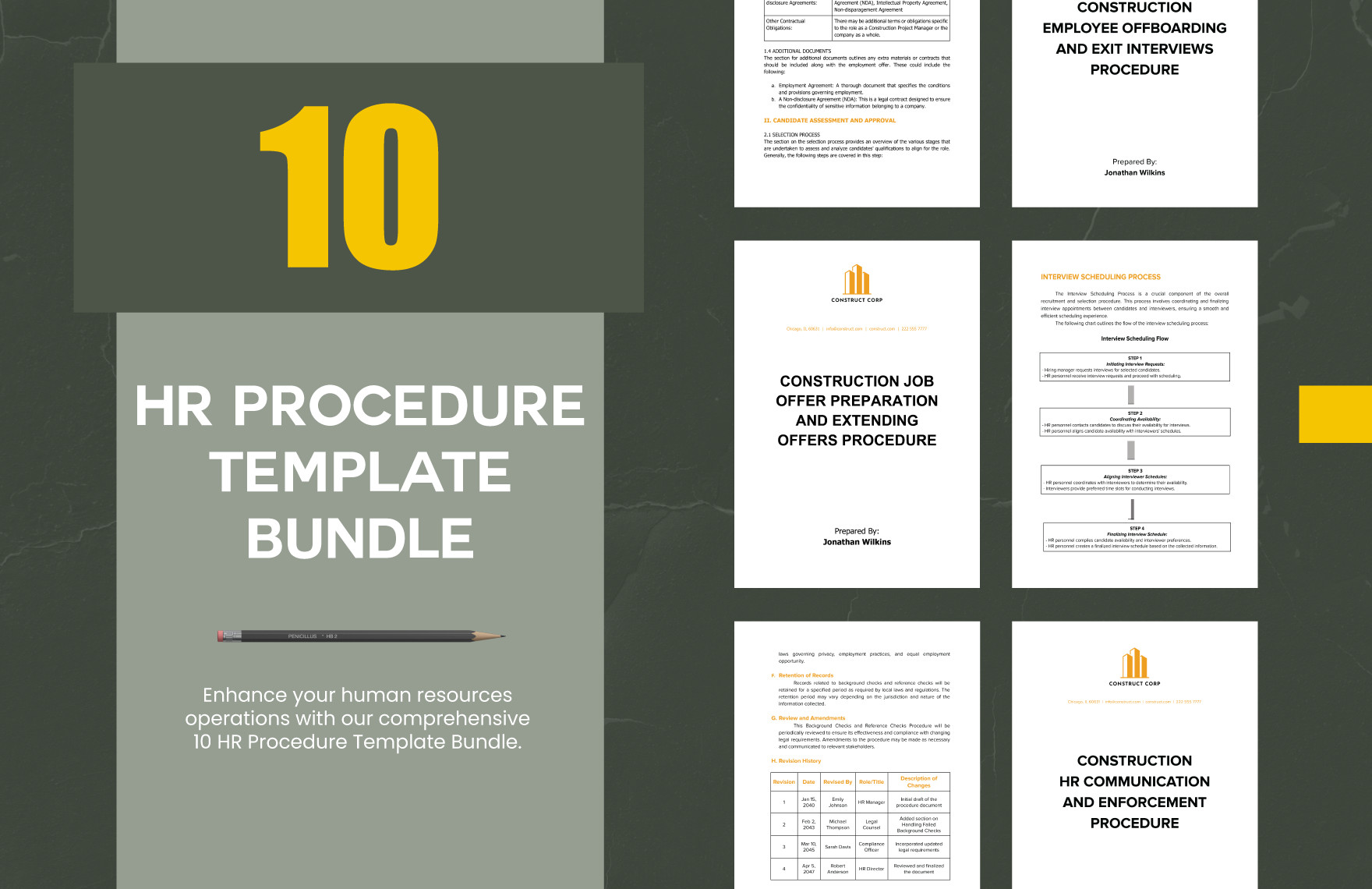
2. Construction HR Communication and Enforcement Procedure
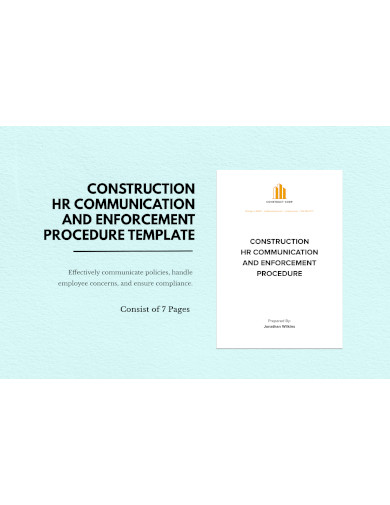
3. Construction Job Posting and Advertising Procedure Template
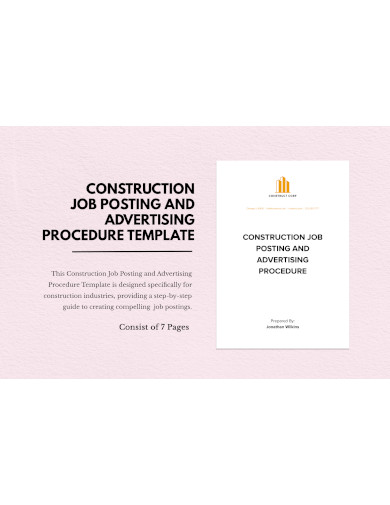
4. Construction Job Offer Preparation and Extending Offers Procedure Template
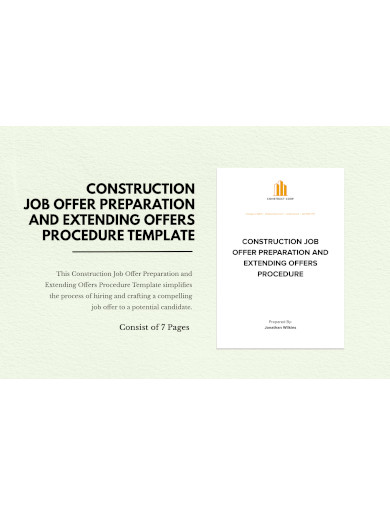
5. Construction Interview Scheduling and Coordination Procedure Template
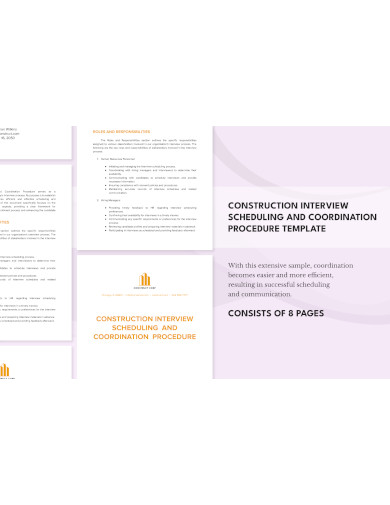
6. Construction Interview Conducting and Evaluation Procedure Template
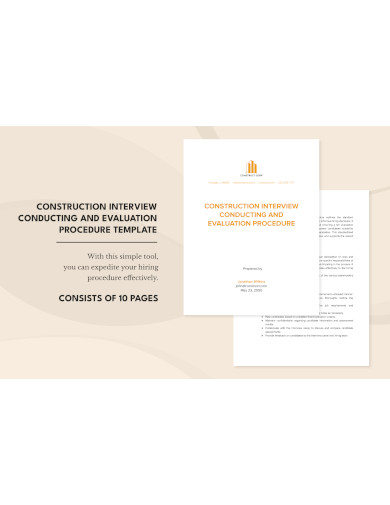
7. Construction Employee Orientation and Induction Procedure Template
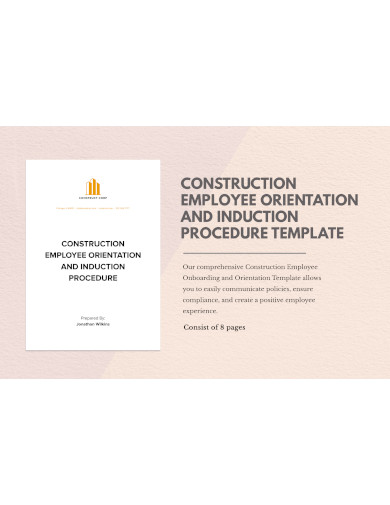
8. Construction Employee Offboarding and Exit Interviews Procedure Template
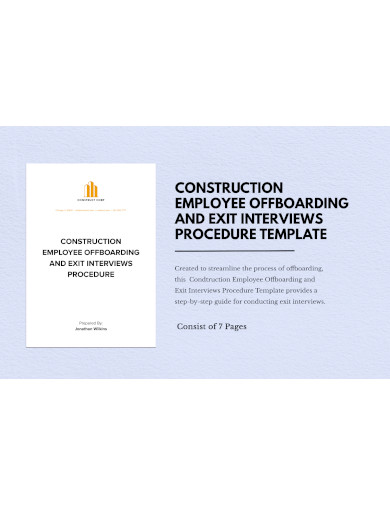
9. Construction Employee Grievance Handling Procedure Template
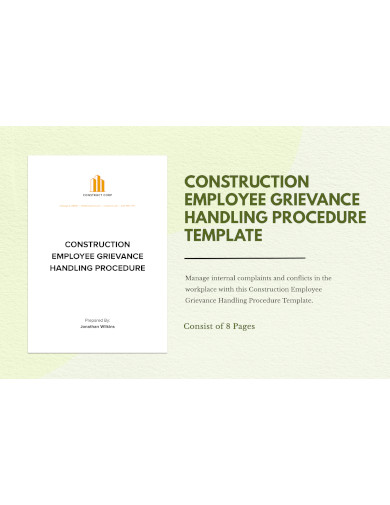
10. Construction Disciplinary Action and Investigation Procedure Template
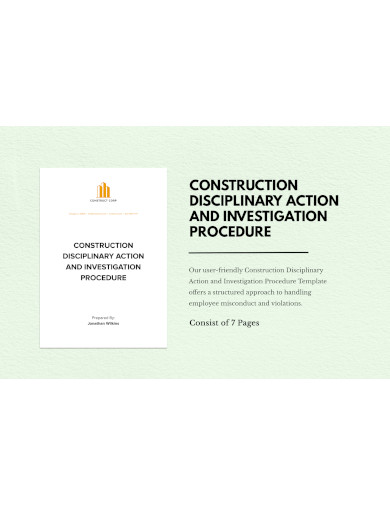
11. Construction Background Checks and Reference Checks Procedure Template

12. Construction HR Procedure Template
What is Construction HR Procedure?
Understanding the Basics
Construction HR Procedure refers to the structured approach and guidelines followed by companies in the construction sector to manage human resources. With the unique challenges posed by construction projects, such as variable work locations, diverse job roles, and high risks, HR in this sector requires specialized procedures to function efficiently.
The Significance in Construction
In the world of bricks, beams, and blueprints, human resources play a pivotal role. The workforce drives the execution of sample plans and the realization of architectural marvels. For this reason, construction companies need well-defined HR procedures to recruit the right talent, manage them effectively, and ensure projects are completed seamlessly.
Key Components
There are several elements that make up the Construction HR Procedure:
- Recruitment: Finding skilled labor, engineers, managers, and other professionals suitable for the specific requirements of construction projects.
- Training & Development: Ensuring that all staff, especially those on-site, are trained in safety procedures, equipment usage, and other essential skills.
- Compensation & Benefits: Designing competitive packages to attract and retain the best talents in a competitive market.
- Safety Protocols: Given the high-risk nature of construction sites, establishing clear safety and health protocols is paramount.
- Conflict Resolution: Addressing grievances, conflicts, and disputes that may arise among the diverse workforce in a timely and fair manner.
Challenges Faced
With varying project scales, tight deadlines, and diverse teams, the construction sector faces unique HR challenges. From ensuring legal compliance across different sites to managing transient workforce, the HR department’s role is both critical and complex.
How do you create HR policies and procedures?
Starting with Research
Before creating any policies or procedures, it’s essential to research the specific requirements of the industry, company culture, and legal mandates. Understand what issues need addressing, what best practices other companies adopt, and what legal regulations need consideration.
Drafting the Policy
- Purpose & Scope: Start by defining the purpose of the policy. For instance, a safety protocol’s purpose might be to reduce on-site accidents. Outline the scope, indicating who it applies to and in what situations.
- Policy Content: Clearly detail the policy. For a safety protocol, mention every safety measure, the equipment required, and how to use it.
- Roles & Responsibilities: Define who is responsible for what. Assign roles for monitoring, enforcement, and review.
Procedure Development - Step-by-Step Process: Every procedure should have a clear, step-by-step process. For instance, the hiring procedure might start with job postings and end with onboarding.
- Documentation: Ensure there are templates and forms wherever necessary. For instance, a leave application form or a safety checklist.
- Feedback Mechanism: Implement ways to gather feedback on the procedure to know if it’s effective or needs improvement.
Communication & Training
Once policies and procedures are established, they’re effective only if the workforce knows about them. Regular training sessions, workshops, and informational meetings can help disseminate the details.
Regular Reviews & Updates
Policies and procedures are not static. As the industry evolves, and as the company grows, it’s vital to review and update them regularly. This ensures that they remain relevant, effective, and in line with legal and industry standards.
13. Construction HR Procedure in PDF
What is the difference between HR policies and procedures?
Setting the Stage
In the world of human resources, terms like “policies” and “procedures” are often used interchangeably. However, they have distinct meanings and functions. To build a strong and efficient HR framework, understanding the difference between these two is essential.
Defining HR Policies
HR policies can be understood as the guiding principles or rules set by an organization regarding people management. These policies serve multiple purposes:
- Foundational Blueprint: Policies act as a foundation, outlining the company’s stance on various HR matters, such as recruitment, leave, compensation, and conflict resolution.
- Consistency & Fairness: With clear policies in place, decisions are not made on an ad-hoc basis, ensuring that employees are treated fairly and consistently across the board.
- Legal Compliance: Many HR policies are developed to ensure that the company remains compliant with employment laws and regulations.
- Examples of HR Policies: Equal Employment Opportunity (EEO) policy, Anti-harassment policy, Leave policy, Compensation and Benefits policy.
- Defining HR Procedures
While policies define the “what” and “why,” procedures describe the “how.” HR procedures provide a step-by-step guide on how specific HR tasks or activities should be carried out.
- Detailed Guidance: Procedures offer detailed, actionable steps, ensuring clarity in execution and minimizing ambiguity.
- Efficiency & Standardization: With established procedures, HR activities are streamlined, reducing the chances of errors and ensuring uniformity in actions.
- Training & Onboarding: Clear procedures help in training new HR staff, ensuring they understand the modus operandi of the organization.
- Examples of HR Procedures: The procedure for onboarding a new employee, the procedure for handling workplace complaints, the procedure for conducting performance appraisals.
- The Interplay Between the Two
Imagine a scenario where the policy is “The company promotes equal employment opportunities and does not tolerate discrimination.” The corresponding procedure could be a detailed guide on how job postings are to be written, ensuring no discriminatory language is used, how interviews are to be conducted ensuring a fair process, and how any complaints regarding discrimination are to be handled.
In essence, while the policy sets the direction and expectation, the procedure lays out the roadmap to achieve it.
Importance of Clarity
One of the challenges organizations often face is ensuring that both their policies and procedures are communicated clearly and are easily accessible to all employees. This avoids misunderstandings and ensures that everyone knows what is expected and how things are done.
Conclusion
To drive the point home, HR policies are the broad, overarching principles or rules, while HR procedures are the detailed steps on how to operationalize those principles. Together, they form a comprehensive framework that not only guides HR activities but also ensures that the organization’s values, culture, and legal obligations are upheld.
Related Posts
Retirement Speech Samples & Templates
Weekly Schedule Samples & Templates
Contractual Agreement Samples & Templates
FREE 9+ Amazing Sample Church Bulletin Templates in PSD | PDF
Sample Business Card Templates
Sample Cashier Job Descriptions
Questionnaire Samples
FREE 10+ Sample HR Resource Templates in PDF
FREE 49+ Sample Job Descriptions in PDF | MS Word
FREE 23+ Sample Event Calendar Templates in PDF | MS Word | Google Docs | Apple Pages
Company Profile Samples
FREE 10+ Leadership Report Samples [ Development, Training, Camp ]
FREE 24+ Sample Payment Schedules in PDF | MS Word
FREE 10+ Return to Work Action Plan Samples in PDF | DOC
Autobiography Samples & Templates


